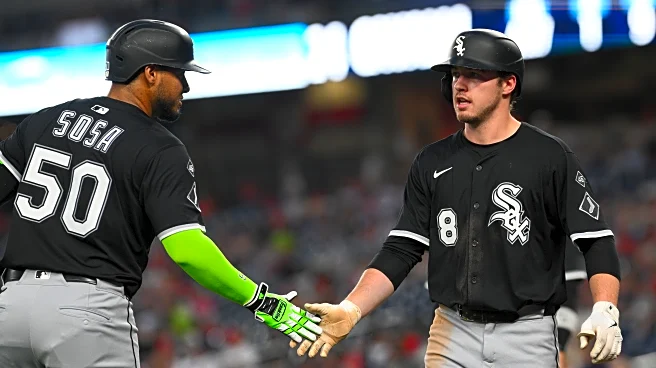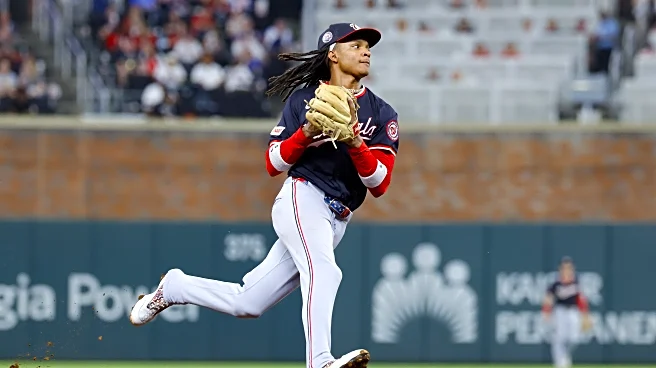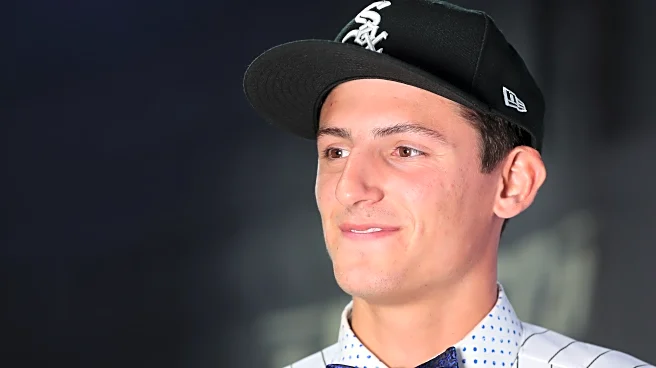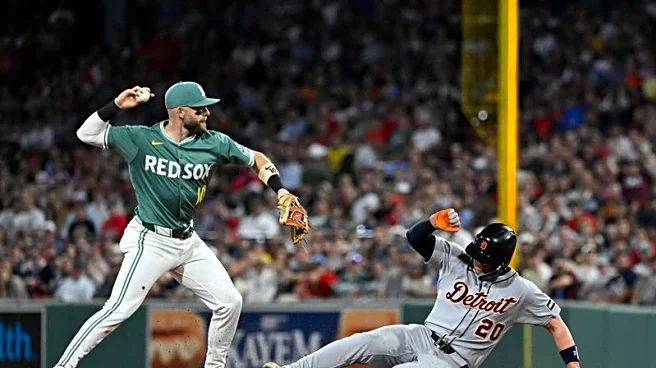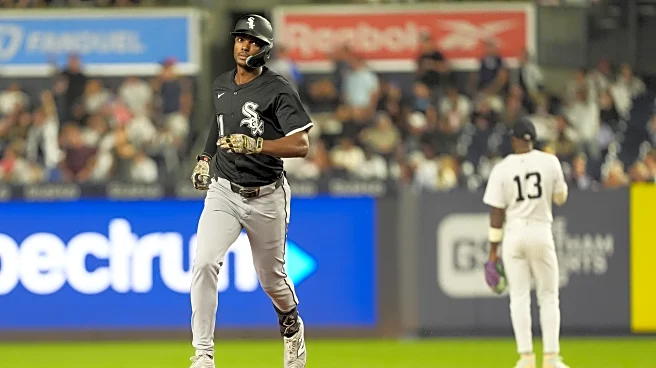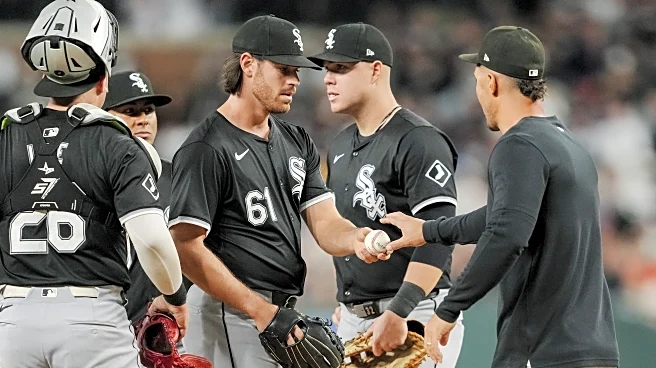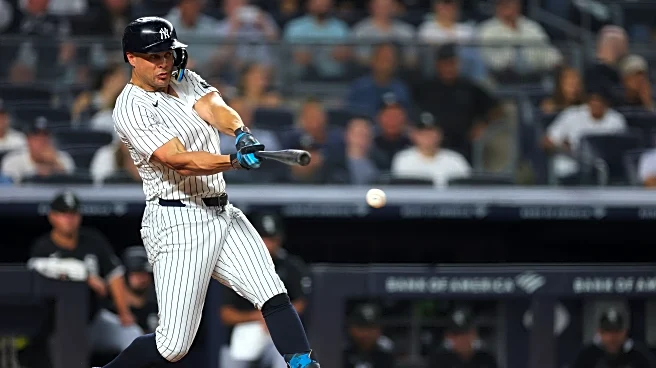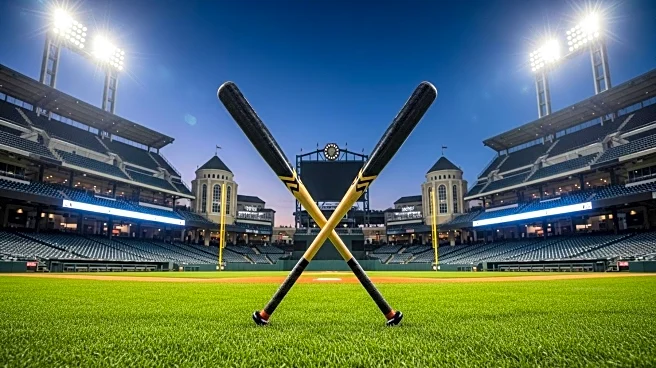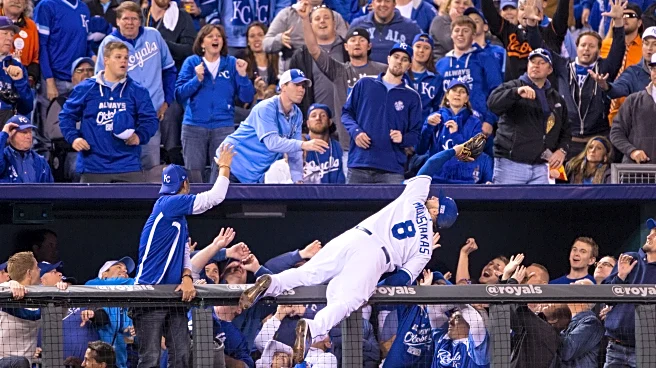ESPN apparently tried to end the 2025 season by trying to come up with something nice to say about the White Sox. They may not have succeeded.
After having the Sox 29th on their team rankings almost the entire
season (as did anyone else who does such lists, thank you Rockies), then allowing them to rise to 28th on occasion because the Nationals are so horrid, The Worldwide Leader in Sports couldn’t even bring itself to paint a less dim future, not listing the Sox future “core” players in either the majors or minors under long-term team control, above anyone but the Rockies.
But, then, they tossed a bone — pointing out that the 2025 Chicago White Sox are the first team since the 1946 Reds to have four rookie position players with a WAR of 1.5 or above. That’s one of those artificial baseball-y stats, of course, since it’s generally accepted that 2.0 WAR equals a decent major league regular, like “since 4:34 p.m. EDT on September 21st, he’s second in the league in doubles,” but we’ll take it, right?
Not that the 1.5 even lasted, at least on the bWAR side. Colson Montgomery is an excellent 3.0 bWAR in just part of a season, Kyle Teel a solid 2.0, also on an in-season call-up, but the other two ESPN must have had in mind have plummeted since the kind words: Edgar Quero going 6-for-34 since September 15 and falling to 1.3 bWAR, and Chase Meidroth going 3-for-32 and dropping to 1.4.
Still, at at least one point in time there was an historic comparison. But comparison to what, exactly?
LET US TAKE A LOOK AT THE 1946 REDS ROOKIES
It was an odd year for rookies, because at that juncture the only draft in existence had been one that sent you across an ocean to a situation you were apt to find less than comfortable. There were many players who had a sip of caffeine before going off to war, and were rookies upon their return. That applied to some of the players in the ESPN comparison.
The four who presumably qualified for the designation and rated at least 1.5 bWAR ended up a mixed bag.
Third baseman Grady Hatton (3.5 bWAR in 1946), racked up a career 18.6 through 1960, including an All-Star season in 1952 (and 13 games with the White Sox in 1954). Second baseman Bobby Adams (2.7 WAR), totaled 15.8 WAR through 1959 (including 28 games with the White Sox in 1955). So, solid start: solid careers for both.
Then, there are the other two. Outfielder Benny Zientara, fresh off of four years lost to the service, rated 2.0 bWAR in 1946 but faded to -0.1 in 1947 and was worse in his final season in 1948, ending his career at 0.7 WAR. Shortstop Claude Corbett, an age-30 rookie, missed 1947, fell to 0.2 bWAR in ’48, lasted 44 games the following year and was done: career bWAR 1.5.
The 1946 Reds rookie who was a huge success was pitcher Ewell Blackwell (3.7 bWAR), and an amazing 9.4 and second in NL MVP voting when he led the majors with 22 wins (and 23 complete games!) the next year. Blackwell ended up with a career that included six All-Star seasons and added up to 27.1 bWAR.
All told the 1946 Reds rated 21.7 bWAR for position players and 14.2 for pitchers. The 2025 Sox? That would be 7.4 for position players and 12.6 for pitchers, so they’re starting next year far behind.
OK, WE GET IT, SOME SUCCESSFUL ROOKIES STAY SUCCESSFUL, SOME FADE, BUT THIS IS A TEAM SPORT — WHAT ABOUT THE 1946 REDS TEAM?
Good point. In 1945 the Reds had gone 61-93, seventh place out of eight teams. The rookies helped that improve (as have the White Sox rookies), moving up to sixth place and 67-97 in 1946. The next season was even better, 73-81 and fifth place.
So, onward and upward, right?
Er, uh, well, um … no.
The Reds muddled around and didn’t have a winning season until 1956, when Hall-of-Famer Frank Robinson, Ted Kluszewski and Wally Post each hit at least 35 homers. They went 91-63 that year, only good enough for third place in the NL. Since the postseason wasn’t drowned in members to grab TV money in those days, they had to win the pennant to make it to the World Series — which they eventually did in 1961, losing to the Yankees in five games.
So, a decade to a winning record, 15 years to the World Series?
Yep.
IT WON’T TAKE THE SOX THAT LONG? WILL IT? PROMISE IT WON’T, PLEASE!
Of course not. Maybe.
Past performance does not guarantee future results, just like your broker keeps telling you.
This isn’t a small-market team like the Reds, it’s a huge market team that has a controlling owner who pretends it’s a small market.
Jerry Reinsdorf is 89. Actuarial tables suggest that on average 89-year-old males live another 4 1/2 years or so. Maybe add a couple of years for the medical services available to billionaires.
That should still leave time for a new owner to raise the team to at least a .500 record within a decade.
Shouldn’t it? Please?

